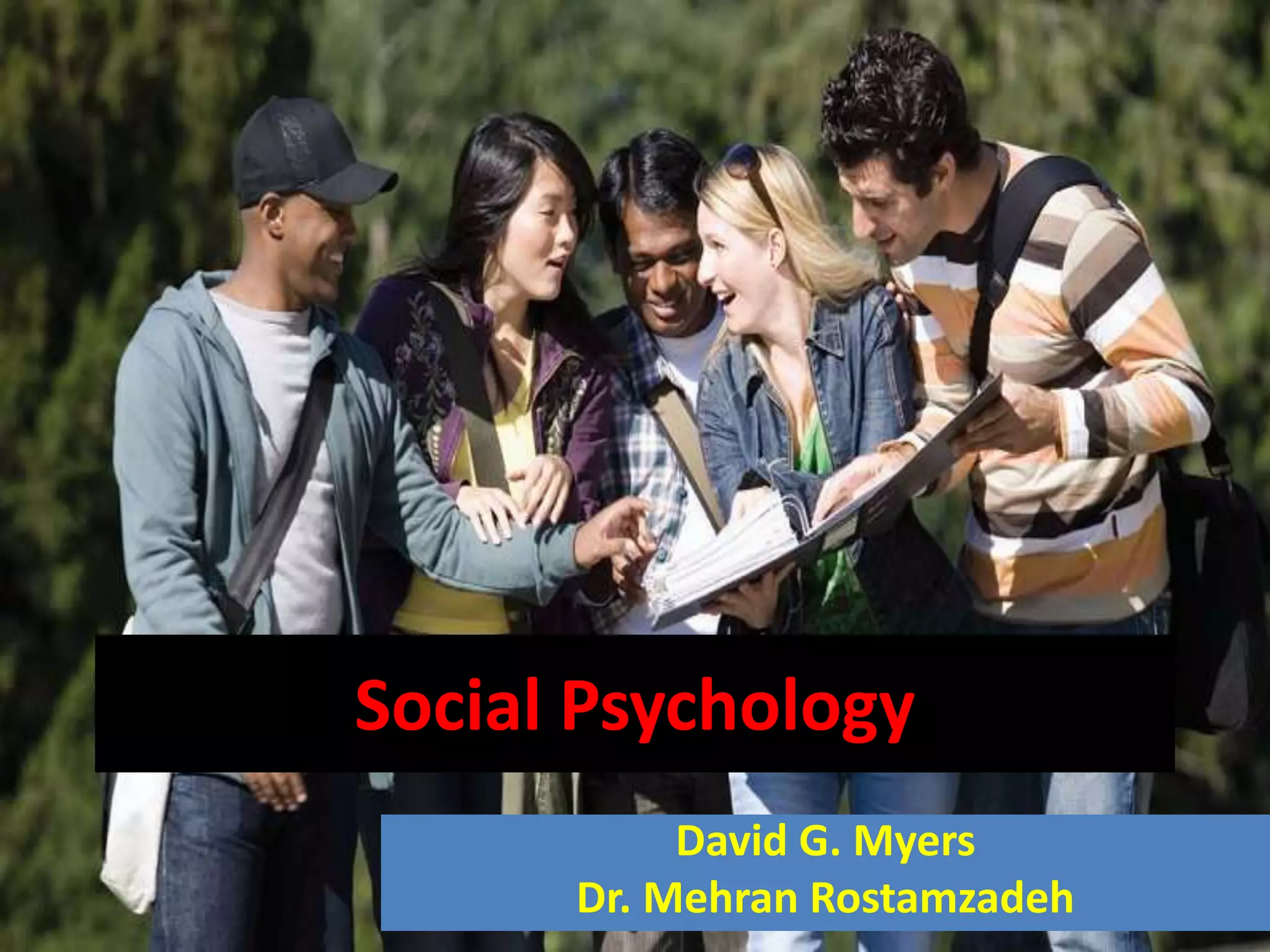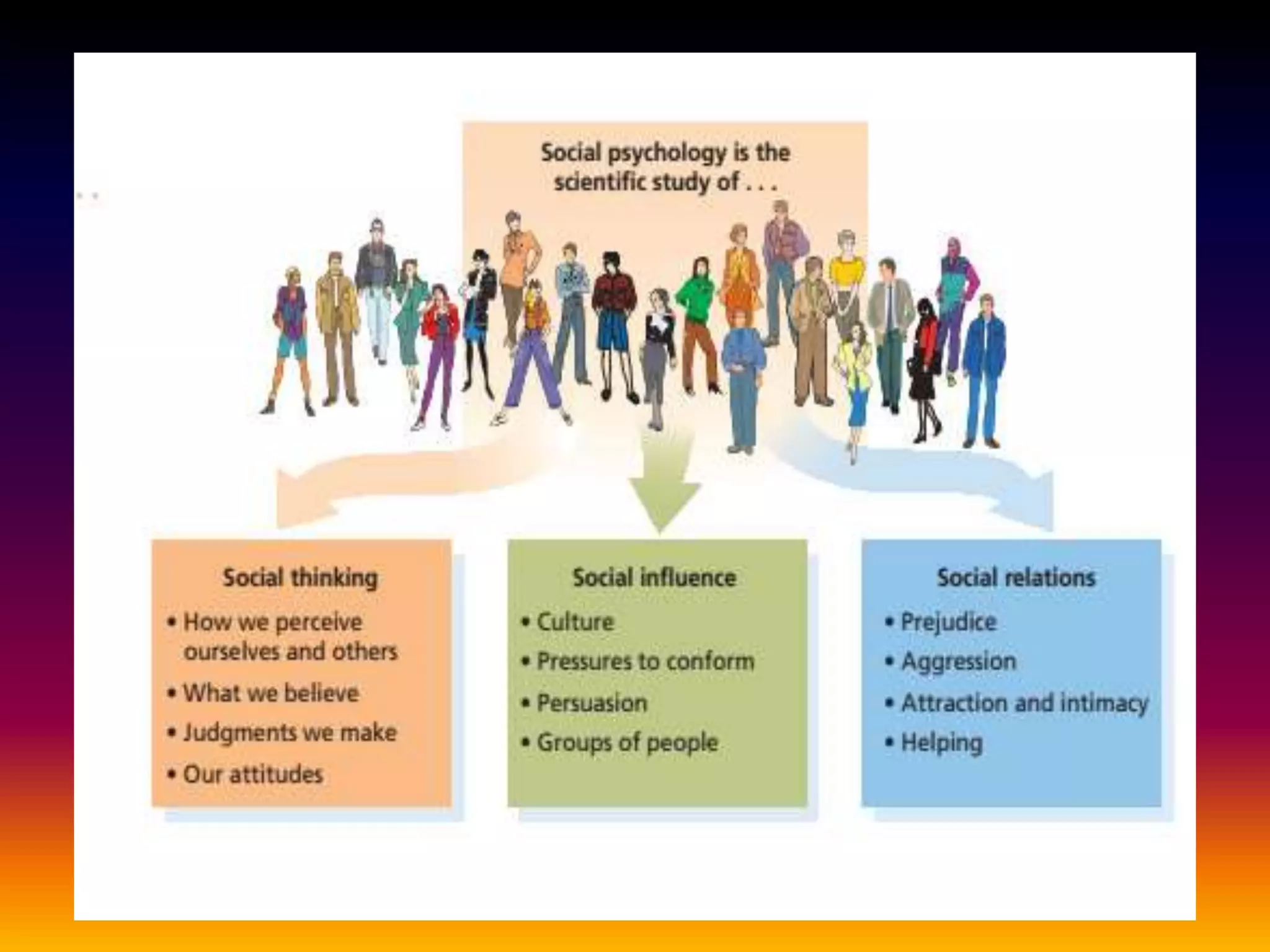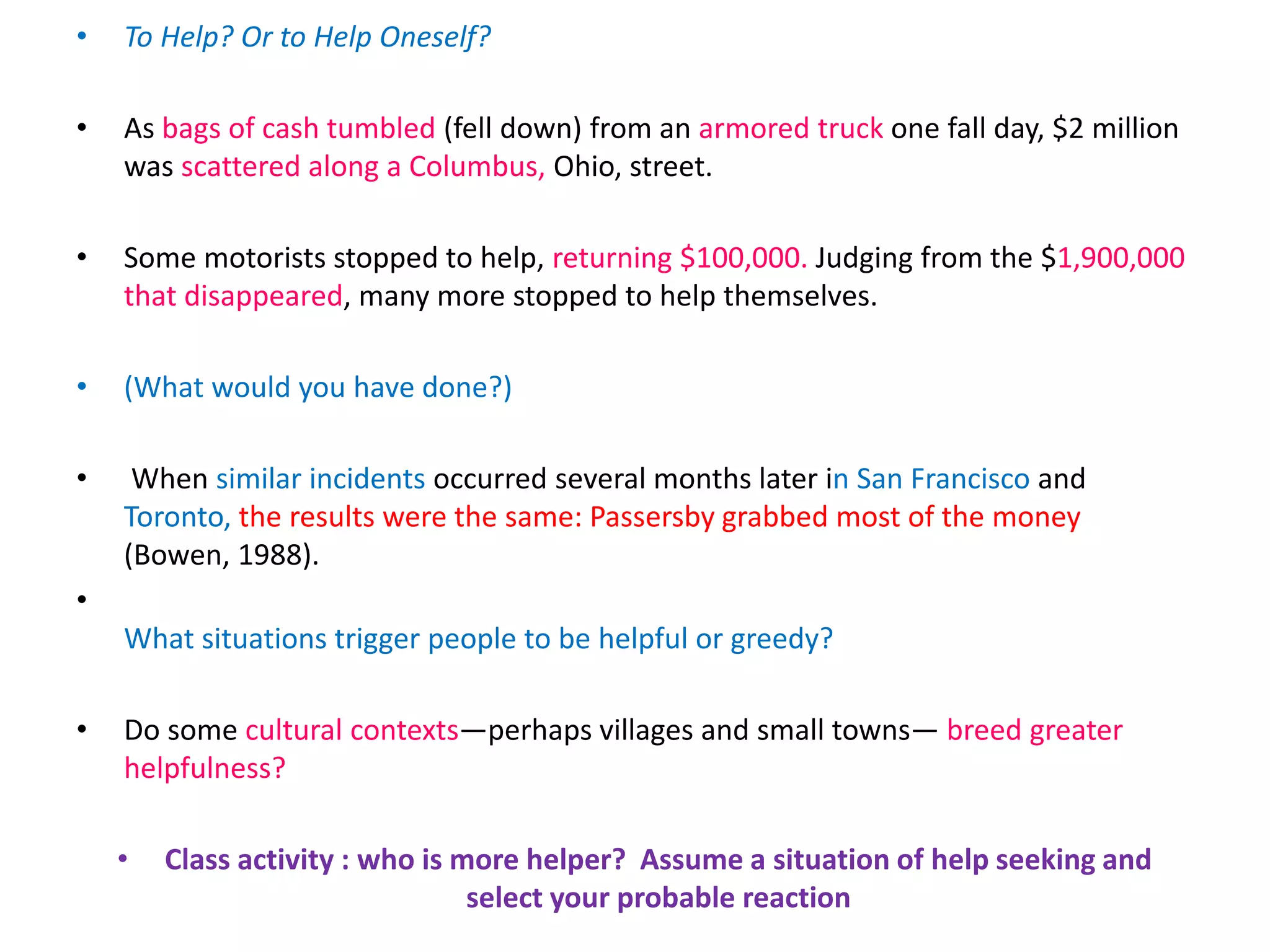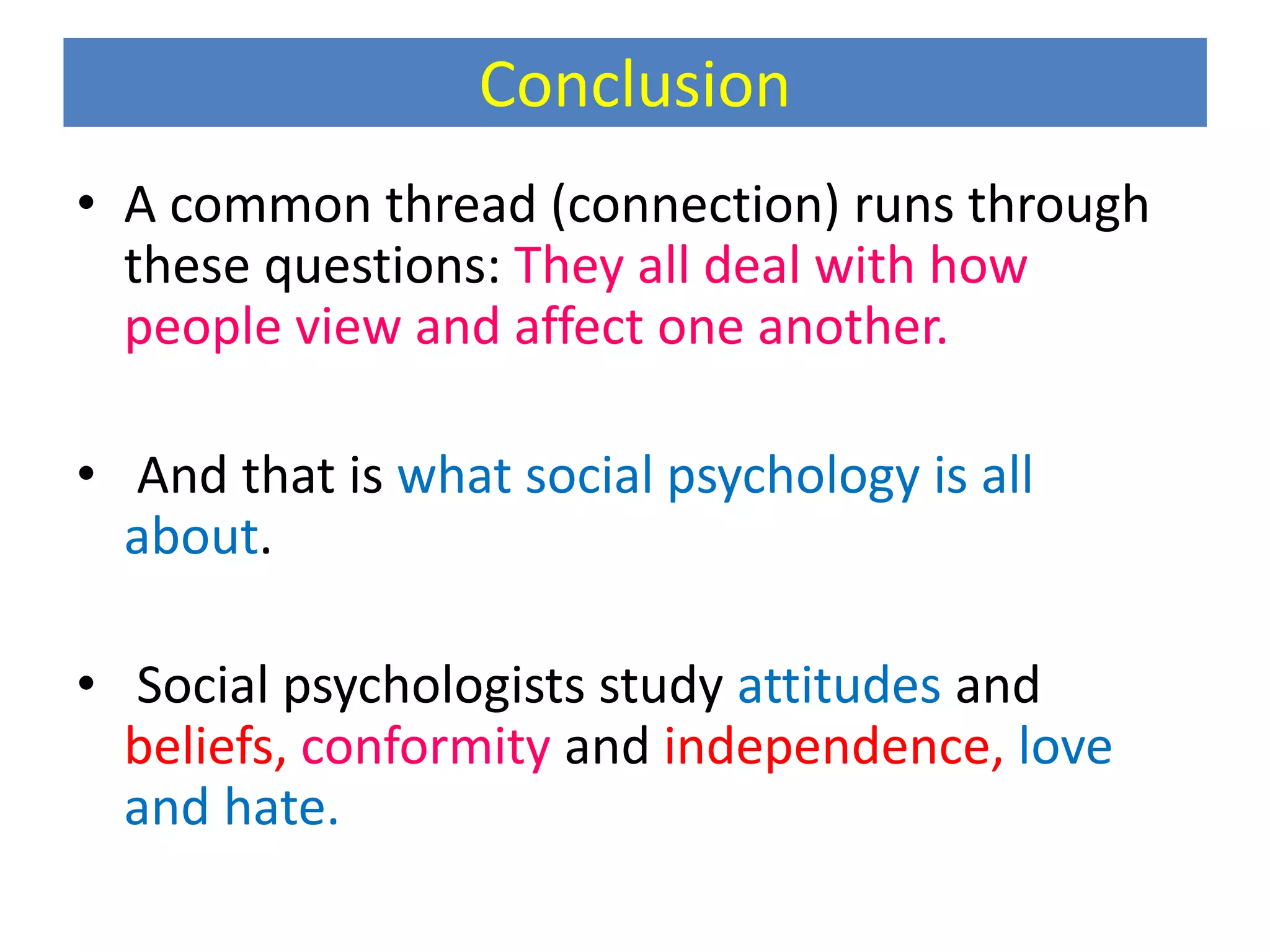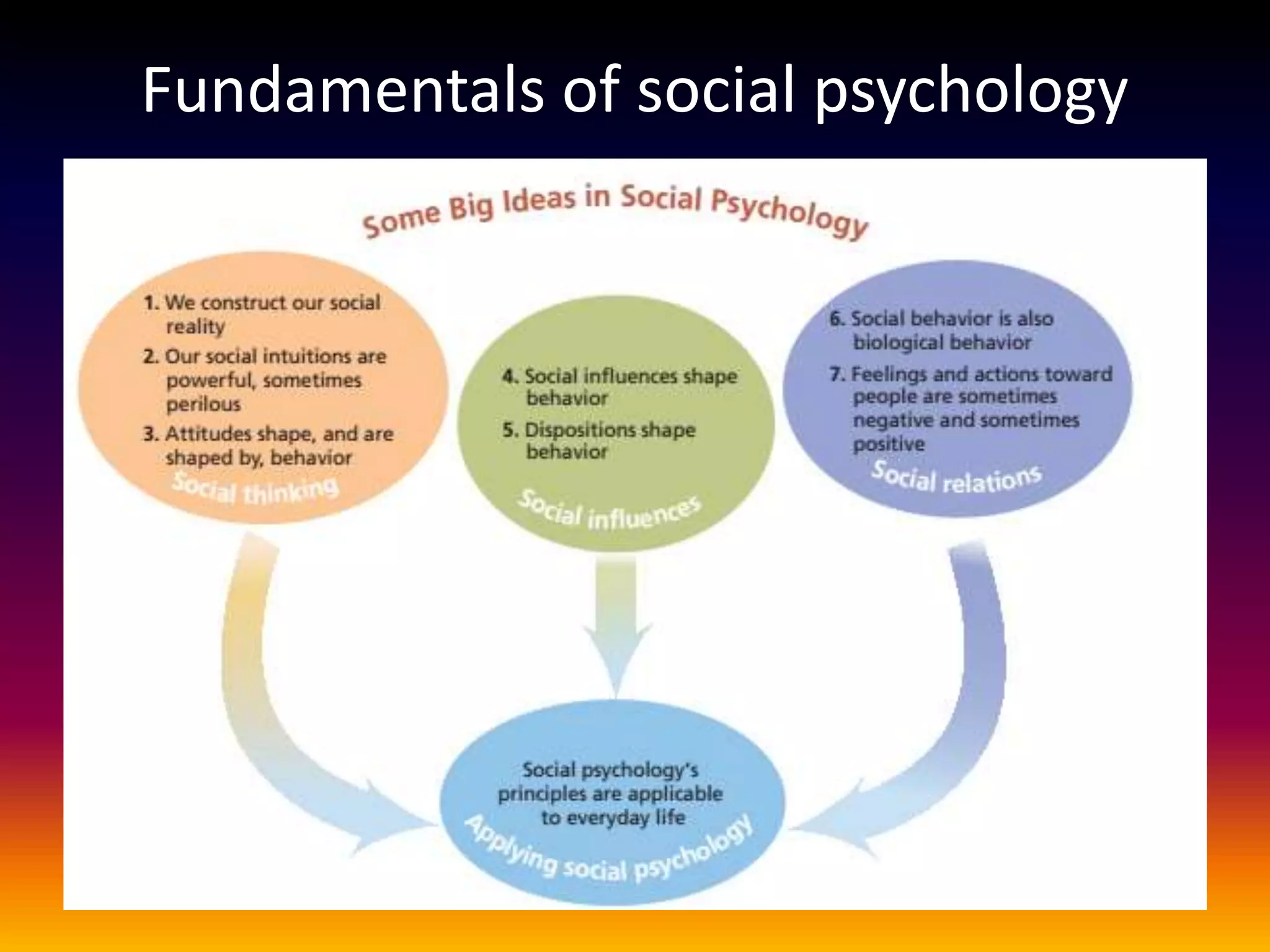This document provides an overview of social psychology. It defines social psychology as the scientific study of how people think about, influence, and relate to one another. It discusses key differences between social psychology, sociology, and personality psychology. The document also outlines some interesting questions studied in social psychology around social influence, helping behavior, and social cognition. It notes that social psychology examines how biological and social factors interact to shape human behavior.
